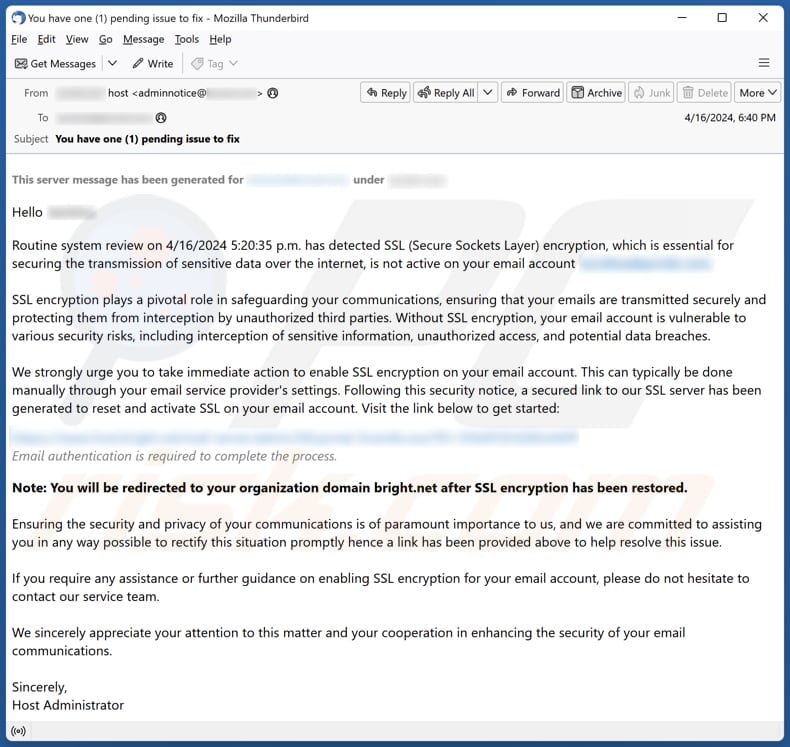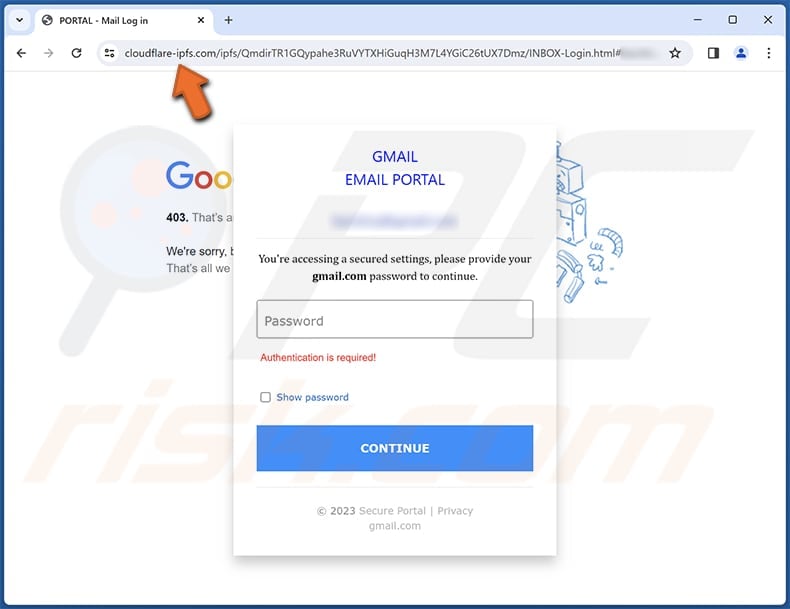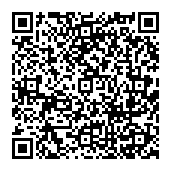How to identify fake letters like "SSL (Secure Sockets Layer) Encryption"
![]() Written by Tomas Meskauskas on
Written by Tomas Meskauskas on
What is "SSL (Secure Sockets Layer) Encryption"?
Upon reviewing the email, we found it to be a deceptive message masquerading as a notification from an email service provider regarding an alleged issue. The individuals orchestrating this spam campaign intend to pilfer personal information. These fraudulent emails are commonly referred to as phishing emails.

More about the "SSL (Secure Sockets Layer) Encryption" scam email
This phishing email, with the subject line "You have one (1) pending issue to fix," appears to target recipients by impersonating a server administrator. The email claims to originate from the recipient's email service provider and warns them of a security issue regarding SSL encryption on their account.
It emphasizes the importance of SSL encryption for securing sensitive data transmission and urges immediate action to enable SSL encryption. The email contains a link purportedly to a secure server for resetting and activating SSL encryption. However, this link leads recipients to a fake website designed to steal their login credentials.
Upon clicking the provided link, recipients are directed to a fake Gmail login page. This page prompts users to enter their password to proceed. The intention behind this phishing tactic is to acquire login credentials for email accounts.
With access to the victim's email account, scammers can take control of the account, enabling them to read, send, and delete emails. They may exploit this access to impersonate the victim, send spam or phishing emails to contacts, or access sensitive information stored in the account.
Also, scammers may attempt to access other online accounts, such as banking, social media, or shopping accounts, potentially gaining access to financial or personal information. Moreover, they may sell the stolen credentials to other cybercriminals, who can then use them for further illicit activities or targeted attacks.
Thus, it is strongly recommended to avoid providing information on suspicious pages, especially those opened via questionable emails.
| Name | SSL (Secure Sockets Layer) Encryption Email Scam |
| Threat Type | Phishing, Scam, Social Engineering, Fraud |
| Fake Claim | Recipients have to fix an issue related to their email account |
| Disguise | Letter from an email service provider |
| Symptoms | Unauthorized online purchases, changed online account passwords, identity theft, illegal access of the computer. |
| Distribution methods | Deceptive emails, rogue online pop-up ads, search engine poisoning techniques, misspelled domains. |
| Damage | Loss of sensitive private information, monetary loss, identity theft. |
| Malware Removal (Windows) | To eliminate possible malware infections, scan your computer with legitimate antivirus software. Our security researchers recommend using Combo Cleaner. |
Similar scam emails in general
In conclusion, this phishing email employs deception by impersonating a server administrator and exploiting concerns about email security to trick recipients into divulging their login credentials. The inclusion of a link to a fake login page is a common tactic used to steal sensitive information.
It is crucial for users to remain vigilant and cautious when encountering unsolicited emails requesting personal or login information. By exercising skepticism and verifying the authenticity of such communications, individuals can protect themselves from falling victim to phishing scams and safeguard their online security and privacy.
Examples of similar scams are "HSBC Transfer Request", "Notification Concerning Your Netflix Account", and "WeTransfer - You Have Received Files".
How do spam campaigns infect computers?
Malicious software can gain access through email by leveraging deceitful attachments and links. Cyber attackers often conceal malware within file attachments, like documents or executable files, that, once accessed, can activate the malware on the recipient's computer.
Furthermore, deceptive emails might include links to malicious websites aimed at duping users into unintentionally downloading malware. These strategies capitalize on curiosity or urgency, coaxing users into actions that jeopardize the security of their devices and networks.
How to avoid installation of malware?
Stay informed about common cyber threats and tactics used by cybercriminals. Exercise caution when opening attachments or clicking on links in emails, especially from unknown or suspicious sources (and when emails are unexpected or irrelevant). Ensure that your operating system, applications, and security measures are all regularly updated.
Adopt safe browsing practices by relying on reputable sources for downloads, such as official websites and verified app stores, and avoid interacting with pop-ups, ads, buttons, etc., on shady sites. Never download pirated software or cracking tools. Scan your computer for threats regularly.
If you have already opened malicious attachments, we recommend running a scan with Combo Cleaner Antivirus for Windows to automatically eliminate infiltrated malware.
Text presented in the "SSL (Secure Sockets Layer) Encryption" email letter:
Subject: You have one (1) pending issue to fix
This server message has been generated for ********* under *********.
Hello *********,
Routine system review on 4/16/2024 5:20:35 p.m. has detected SSL (Secure Sockets Layer) encryption, which is essential for securing the transmission of sensitive data over the internet, is not active on your email account *********.
SSL encryption plays a pivotal role in safeguarding your communications, ensuring that your emails are transmitted securely and protecting them from interception by unauthorized third parties. Without SSL encryption, your email account is vulnerable to various security risks, including interception of sensitive information, unauthorized access, and potential data breaches.
We strongly urge you to take immediate action to enable SSL encryption on your email account. This can typically be done manually through your email service provider's settings. Following this security notice, a secured link to our SSL server has been generated to reset and activate SSL on your email account. Visit the link below to get started:
-
Email authentication is required to complete the process.
Note: You will be redirected to your organization domain bright.net after SSL encryption has been restored.Ensuring the security and privacy of your communications is of paramount importance to us, and we are committed to assisting you in any way possible to rectify this situation promptly hence a link has been provided above to help resolve this issue.
If you require any assistance or further guidance on enabling SSL encryption for your email account, please do not hesitate to contact our service team.
We sincerely appreciate your attention to this matter and your cooperation in enhancing the security of your email communications.
Sincerely,
Host Administrator
Phishing website used in this campaign:

Instant automatic malware removal:
Manual threat removal might be a lengthy and complicated process that requires advanced IT skills. Combo Cleaner is a professional automatic malware removal tool that is recommended to get rid of malware. Download it by clicking the button below:
▼ DOWNLOAD Combo Cleaner
By downloading any software listed on this website you agree to our Privacy Policy and Terms of Use. To use full-featured product, you have to purchase a license for Combo Cleaner. 7 days free trial available. Combo Cleaner is owned and operated by Rcs Lt, the parent company of PCRisk.com read more.
Quick menu:
- What is SSL (Secure Sockets Layer) Encryption phishing campaign?
- Types of malicious emails.
- How to spot a malicious email?
- What to do if you fell for an email scam?
Types of malicious emails:
![]() Phishing Emails
Phishing Emails
Most commonly, cybercriminals use deceptive emails to trick Internet users into giving away their sensitive private information, for example, login information for various online services, email accounts, or online banking information.
Such attacks are called phishing. In a phishing attack, cybercriminals usually send an email message with some popular service logo (for example, Microsoft, DHL, Amazon, Netflix), create urgency (wrong shipping address, expired password, etc.), and place a link which they hope their potential victims will click on.
After clicking the link presented in such email message, victims are redirected to a fake website that looks identical or extremely similar to the original one. Victims are then asked to enter their password, credit card details, or some other information that gets stolen by cybercriminals.
![]() Emails with Malicious Attachments
Emails with Malicious Attachments
Another popular attack vector is email spam with malicious attachments that infect users' computers with malware. Malicious attachments usually carry trojans that are capable of stealing passwords, banking information, and other sensitive information.
In such attacks, cybercriminals' main goal is to trick their potential victims into opening an infected email attachment. To achieve this goal, email messages usually talk about recently received invoices, faxes, or voice messages.
If a potential victim falls for the lure and opens the attachment, their computers get infected, and cybercriminals can collect a lot of sensitive information.
While it's a more complicated method to steal personal information (spam filters and antivirus programs usually detect such attempts), if successful, cybercriminals can get a much wider array of data and can collect information for a long period of time.
![]() Sextortion Emails
Sextortion Emails
This is a type of phishing. In this case, users receive an email claiming that a cybercriminal could access the webcam of the potential victim and has a video recording of one's masturbation.
To get rid of the video, victims are asked to pay a ransom (usually using Bitcoin or another cryptocurrency). Nevertheless, all of these claims are false - users who receive such emails should ignore and delete them.
How to spot a malicious email?
While cyber criminals try to make their lure emails look trustworthy, here are some things that you should look for when trying to spot a phishing email:
- Check the sender's ("from") email address: Hover your mouse over the "from" address and check if it's legitimate. For example, if you received an email from Microsoft, be sure to check if the email address is @microsoft.com and not something suspicious like @m1crosoft.com, @microsfot.com, @account-security-noreply.com, etc.
- Check for generic greetings: If the greeting in the email is "Dear user", "Dear @youremail.com", "Dear valued customer", this should raise suspiciousness. Most commonly, companies call you by your name. Lack of this information could signal a phishing attempt.
- Check the links in the email: Hover your mouse over the link presented in the email, if the link that appears seems suspicious, don't click it. For example, if you received an email from Microsoft and the link in the email shows that it will go to firebasestorage.googleapis.com/v0... you shouldn't trust it. It's best not to click any links in the emails but to visit the company website that sent you the email in the first place.
- Don't blindly trust email attachments: Most commonly, legitimate companies will ask you to log in to their website and to view any documents there; if you received an email with an attachment, it's a good idea to scan it with an antivirus application. Infected email attachments are a common attack vector used by cybercriminals.
To minimise the risk of opening phishing and malicious emails we recommend using Combo Cleaner Antivirus for Windows.
Example of a spam email:

What to do if you fell for an email scam?
- If you clicked on a link in a phishing email and entered your password - be sure to change your password as soon as possible. Usually, cybercriminals collect stolen credentials and then sell them to other groups that use them for malicious purposes. If you change your password in a timely manner, there's a chance that criminals won't have enough time to do any damage.
- If you entered your credit card information - contact your bank as soon as possible and explain the situation. There's a good chance that you will need to cancel your compromised credit card and get a new one.
- If you see any signs of identity theft - you should immediately contact the Federal Trade Commission. This institution will collect information about your situation and create a personal recovery plan.
- If you opened a malicious attachment - your computer is probably infected, you should scan it with a reputable antivirus application. For this purpose, we recommend using Combo Cleaner Antivirus for Windows.
- Help other Internet users - report phishing emails to Anti-Phishing Working Group, FBI’s Internet Crime Complaint Center, National Fraud Information Center and U.S. Department of Justice.
Frequently Asked Questions (FAQ)
Why did I receive this email?
Criminals send out identical emails to a large number of recipients, hoping that at least one person will fall for their scam. These spam messages are not personalized and are created in bulk for widespread distribution, reaching even individuals who do not use Gmail.
I have provided my personal information when tricked by this email, what should I do?
If you have inadvertently shared personal information due to falling for a phishing email, act swiftly to safeguard your accounts. Immediately change the passwords for any impacted accounts and contemplate reporting the incident to the appropriate authorities or institutions.
I have downloaded and opened a malicious file attached to an email, is my computer infected?
The likelihood of your computer being infected hinges greatly on the type of file you have opened. Executable files (.exe) or script files (.js, .vbs) are often carriers of malware, which can infect your system upon execution. Conversely, file types such as documents or multimedia files generally pose a lower risk of infection.
I have read the email but did not open the attachment, is my computer infected?
Merely opening an email does not pose a threat on its own. However, clicking on links within the email or opening attached files can lead to system infections.
Will Combo Cleaner remove malware infections that were present in email attachment?
Combo Cleaner boasts the capability to identify and eliminate almost all known malware infections. Given that sophisticated malware can deeply embed itself within the system, it is crucial to perform a comprehensive system scan to guarantee the detection and removal of any concealed threats.


▼ Show Discussion